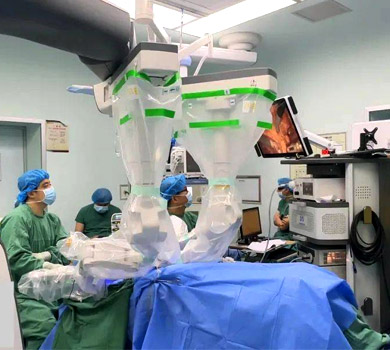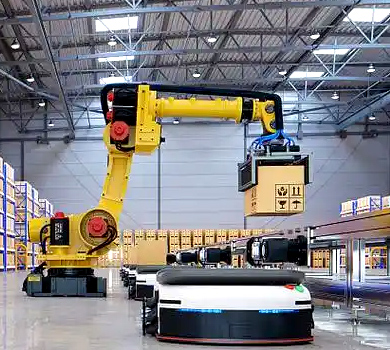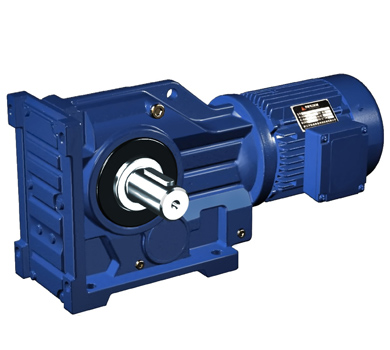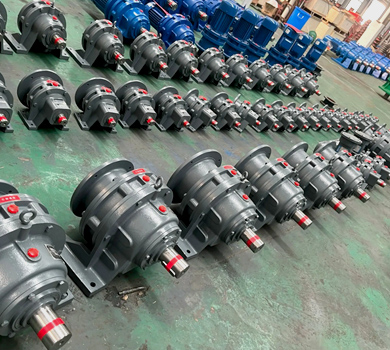Robotic welding workstations are essential in modern automotive production, particularly for subframe assembly, which is a critical structural component of a vehicle. These systems require high-performance, reliable transmission solutions to ensure precision, efficiency, and longevity under demanding industrial conditions.
- Typical system components include industrial robots, welding guns, conveyors, and positioning systems, all of which rely on precise motion control and robust mechanical components.
- With the rising demand for lightweight yet high-strength vehicle structures, manufacturers are pushing the limits of robotic welding systems, leading to increased stress on gear drives.
- Current challenges include ensuring long-term stability, minimizing energy consumption, and integrating compact, modular designs to save space and reduce downtime.
1. Industry Challenges and Pain Points Analysis
In the field of automotive subframe robotic welding, transmission systems are a core element. They must withstand heavy loads, maintain high repeatability, and operate reliably in high-temperature and high-dust environments.
The major pain points in this industry include:
- Low torque density: Existing gear reducers often fail to meet the increasing torque requirements due to design limitations.
- Inadequate structural compactness: The integration of multiple robotic axes in limited space requires a more compact transmission design.
- High maintenance frequency: In high-duty-cycle applications, traditional gearboxes require frequent service and replacement, leading to production halts and increased costs.
- Limited environmental adaptability: Many gear reducers are not designed for high-temperature welding environments or cleanroom conditions, which is a significant bottleneck for automation upgrades.
- Poor compatibility with robot controllers: Integration with modern robot control systems is often hindered by outdated interfaces or communication protocols.
2. The Key Role of Gear Reducers in Robotic Welding and Their Technical Requirements
Gear reducers in robotic welding workstations must deliver high torque output while maintaining high precision and fast response times to support complex welding trajectories and tight tolerances.
Key performance requirements include:
- High torque density: Enables compact design while delivering high output torque.
- High transmission accuracy: Ensures repeatable and precise motion for consistent welding quality.
- Fast response speed: Critical for multi-axis synchronization and high-speed welding tasks.
- Excellent compatibility: Must integrate seamlessly with robot controllers and drive systems.
- Robust and durable construction: Capable of handling heavy loads and long operational hours.
- High stability and rigidity: Prevents backlash and vibration during welding operations.
- Customizable gear ratios: Allows tailored performance to match specific robotic applications.
- Environmental adaptability: Designed to function reliably in high-temperature, high-dust, and cleanroom conditions.
- Long service life and low maintenance: Minimizes downtime and supports continuous production.
3. Waimica’s Gear Reducer Solutions for Robotic Welding Workstations
Waimica has developed a series of high-performance gear reducers specifically for automotive subframe welding systems. Our solutions are engineered to overcome the challenges of this demanding application with a focus on reliability, efficiency, and customization.
Key Features of Waimica’s Gear Reducers:
- Compact and modular design: Optimized for integration in multi-axis robotic systems, reducing overall footprint and simplifying installation.
- High torsional rigidity and backlash control: Ensures accurate and stable motion for complex welding tasks.
- Customizable gear ratios: Supports a wide range of robot configurations and performance requirements.
- High thermal resistance: Designed for continuous operation in high-temperature welding environments.
- IP67 protection rating: Resists dust, moisture, and minor immersion, making it suitable for industrial conditions.
- Compatibility with major robot brands: Includes standard input flange types and communication protocols for seamless integration with ABB, KUKA, and FANUC systems.
| Parameter | Value |
|---|---|
| Torque Range | 15 Nm – 500 Nm |
| Backlash | < 1 arcmin |
| Efficiency | > 90% |
| Input Flange Types | ISO 9409-1, DIN 5462, Custom |
| Operating Temperature | -20°C to +100°C |
| Protection Class (IP) | IP67 |
| Mounting Options | Flange, Foot, Hollow Shaft |
| Service Life | > 10,000 operating hours |
4. Conclusion and Waimica Brand Value Summary
Waimica’s gear reducers offer a compelling combination of technical performance, modular flexibility, and cost efficiency. Our solutions have demonstrated the ability to replace traditional imported alternatives with a high-performance domestic option that meets or exceeds industry standards.
By continuously investing in R&D, Waimica has positioned itself as a trusted supplier of transmission solutions for robotic welding workstations. Our products are not only engineered to the highest standards, but also designed with the long-term in mind—supporting automation upgrades and adapting to evolving production demands.
Why Waimica?
- High precision and reliability in critical applications.
- Fast delivery and on-time project completion.
- Extensive customization capabilities to meet unique customer requirements.
- Competitive pricing without compromising quality or performance.
- Long-term support and service to ensure system uptime and operational efficiency.
As the automotive industry continues to evolve toward smarter, more automated production lines, Waimica remains at the forefront of innovation in industrial gear drive technology. Our commitment to excellence ensures that we deliver value beyond expectations for customers worldwide.









